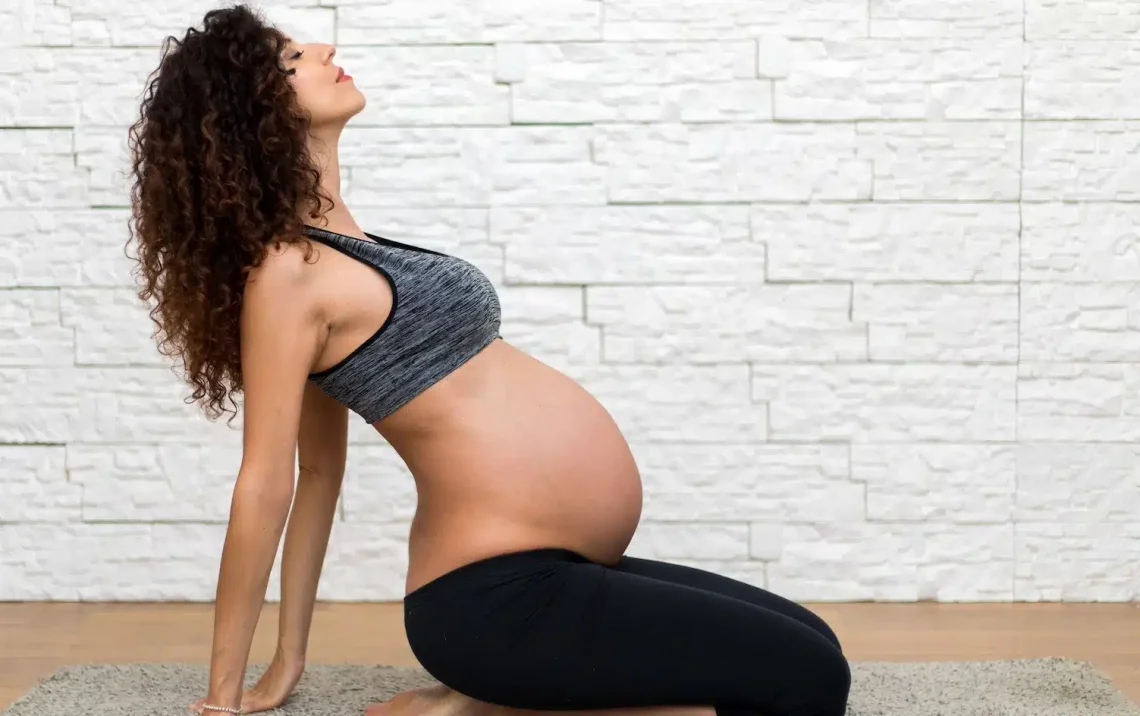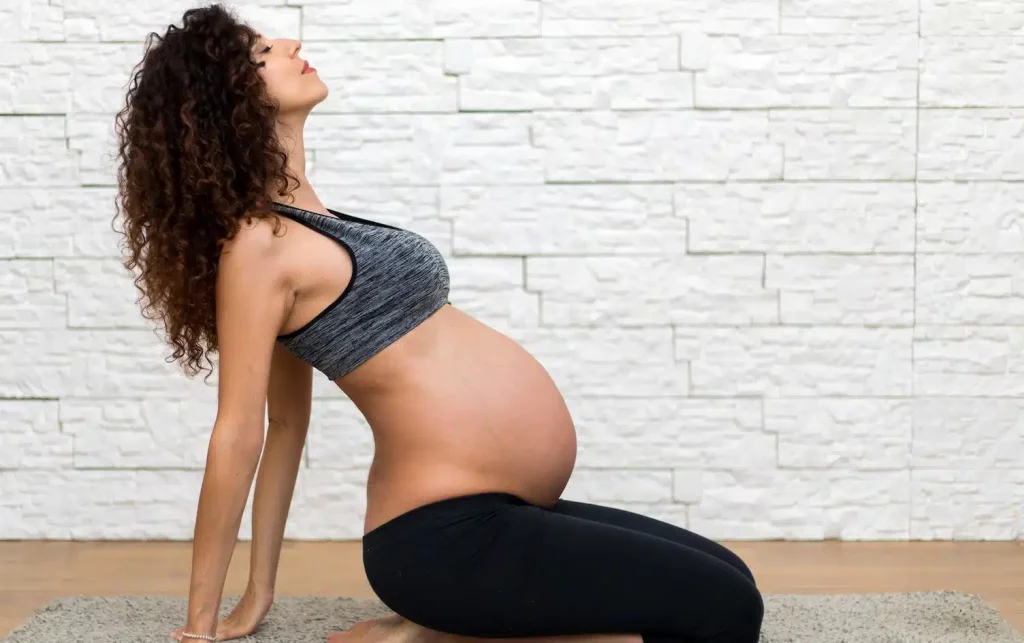
5 Yoga Poses to Avoid During Pregnancy
Pregnancy is an exciting and hopeful time. But not every day is like roses and rainbows.
In order to provide room for your baby to grow, your organs change and squeeze, which takes a toll on your comfort level. And let’s not forget that hormones also ebb and flow, making you feel less like your usual self.
That’s enough to bring on the pregnancy blues, but it doesn’t have to stay that way. According to a recent study, practicing yoga during pregnancy can help improve physical and mental health by keeping them active and stress-free.
While practicing yoga during pregnancy is usually low-risk, some poses may not be appropriate for your baby. Be sure to consult your healthcare professional first to find out which asanas are beneficial and safe for you.
Top 5 Yoga Poses to Avoid During Pregnancy
Before you roll out your yoga mat, let’s take a look at the yoga poses you should avoid during pregnancy to ensure the safety of you and your baby.
1.Forward Folds in Flow Yoga Poses
During pregnancy, yoga postures such as folding your feet forward together can make you feel like you have a watermelon strapped to your body and your toes can’t touch it.
As the weight of your fetus increases, your center of gravity shifts, so you may find it difficult to balance with a growing fetus inside you. Weight gain can bring unwanted guests like back pain and abdominal pressure, and folding forward only makes these feelings worse.
Why not try wide-legged, gentle forward bends? They may make you feel better and more comfortable.
2.Deep twisting poses that put pressure on your organs
After your baby is born, you should avoid deep, closed twisting poses such as Rotating Triangle Pose or King Fish Pose. Twisting poses are like an uncomfortable tight hug that can press on your organs and limit your baby’s space.
But in addition to being uncomfortable, these yoga poses are not conducive to maintaining proper blood flow throughout the body, which means less nutrients and oxygen for your baby.
Additionally, twisting may cause unexpected damage to the body due to increased levels of hormones such as relaxin. As the name suggests, this hormone helps relax muscles and ligaments in preparation for labor.
Since your joints and muscles can become somewhat loose, practicing closed twists can increase your risk of injury or overstretching. Your best bet is to stick to gentle, open twists so that both your body and your baby have a smooth and safe ride.
3.Abdominal postures such as bow pose and locust pose
Yoga and pregnancy go hand in hand. But as your belly grows, it’s not easy to find a comfortable and safe pose. Belly-down yoga poses like Bow Pose or Locust Pose definitely fit the bill.
Stretching face down or lying flat on your back increases abdominal pressure and forces the core muscles to separate even more as the pregnancy increases. The widening space between the abdominal muscles is known as peritoneo-rectal bulge. If this space becomes too wide, any existing lower back and pelvic pain will feel worse and adversely affect your posture.
So instead of trying to lie face down, incorporate gentle stretches into your regular exercises.
4.Full inversions with risk of fall
Complete inversions or inverted positions such as headstand and handstand are contraindicated during pregnancy. Because they are dangerous, you can fall and injure yourself and your baby.
These positions can bring your head below the level of your heart, increasing the chances of dizziness. They also strain your abdominal and back muscles and can squeeze vital blood vessels.
It’s best to avoid inversions and stick to positions that keep you stable and supported to protect yourself and your baby.
5.Lying flat on your back in Shavasana in the second trimester of pregnancy
The ultimate relaxation pose is Shavasana, aka Corpse Pose, where you lie flat on your back. But if you’re in late pregnancy, grab a yoga mat.
Lying flat on your back is bad for your blood pressure. This pose squeezes the inferior vena cava – the main blood vessel responsible for sending blood back to the heart. Lying flat on your back may cause your blood pressure to drop, making you feel dizzy, short of breath, nauseous or retching. And that’s the last thing you want to feel during your pregnancy.
Try exercises that help keep your blood flowing and keep both you and your baby comfortable and relaxed.

Prenatal yoga is more than just stretching. For moms-to-be, prenatal yoga is a healthful and relaxing exercise. You simply need to adjust your yoga poses to make them baby-friendly.
If you are practicing yoga, tell your yoga teacher that you are preparing for pregnancy so they can help you make safe adjustments. However, if you are new to yoga, you can take a yoga class that is tailored specifically for moms-to-be.
Combining yoga with a nutritious diet can help you feel healthier and happier during pregnancy. Eat plenty of juicy fruits, crunchy vegetables, lean meats and healthy fats to replenish the nutrients you and your baby need. Don’t forget to hydrate!
您可能也喜欢

A Beginner’s Guide to Running for Weight Loss (Part 1)
05/12/2024
Benefits of having a buffet near me
05/08/2024

